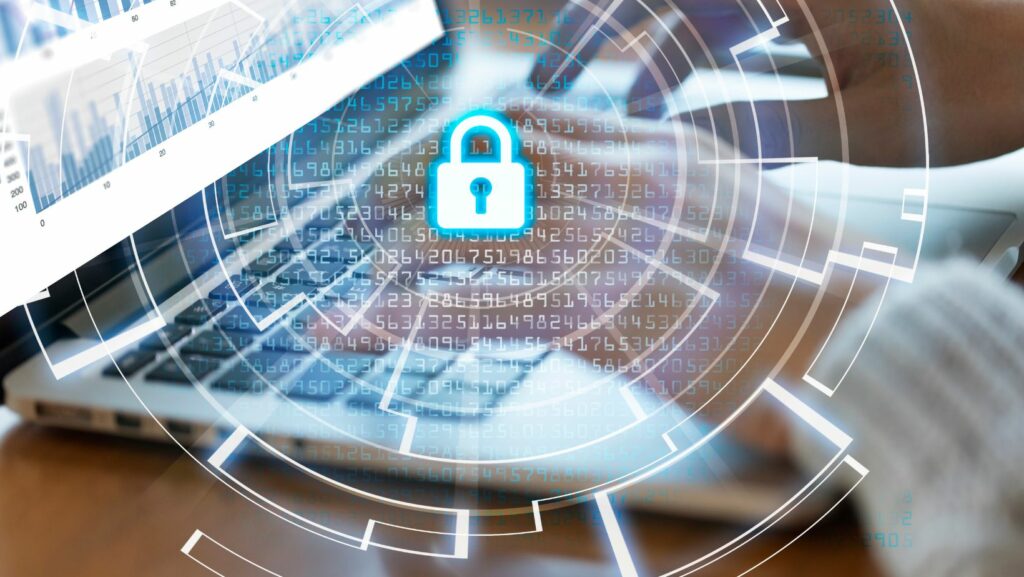Key Takeaways
- Understanding Definitions: Data privacy centers on the rights individuals have over their personal information, while data security focuses on measures that protect this data from unauthorized access and breaches.
- Importance of Consent: Data privacy emphasizes obtaining explicit consent from individuals before collecting or using their data, establishing a framework for trust and transparency.
- Protecting Against Cyber Threats: Data security is essential for defending against cyber threats, ensuring that sensitive information remains confidential and available.
- Complementary Roles: Data privacy and data security work together, with privacy policies guiding data management and security measures enforcing those guidelines to safeguard personal information.
- Current Trends: Organizations must stay informed about evolving regulations, such as GDPR and CCPA, and adapt to emerging technologies like AI and IoT, which impact both data privacy and security.
- Balancing Challenges: Striking a balance between robust data security protocols and individuals’ privacy rights presents ongoing challenges for organizations, highlighting the need for well-integrated strategies.
In today’s digital landscape, data privacy and data security are often used interchangeably, but they represent distinct concepts that are crucial for protecting personal and organizational information. As individuals and businesses increasingly rely on technology, understanding the difference between these two terms becomes essential for safeguarding sensitive data.
Data privacy focuses on how information is collected, used, and shared, emphasizing individuals’ rights and consent. On the other hand, data security involves the measures taken to protect data from unauthorized access and breaches. With cyber threats on the rise, navigating the complexities of data privacy and security is more important than ever for maintaining trust and compliance in a data-driven world.
Data Privacy vs Data Security
Data privacy refers to the management and protection of personal information. It emphasizes the rights of individuals regarding their data and the obligations of organizations that collect and use that data.
Definition of Data Privacy
Data privacy encompasses policies and practices aimed at ensuring individuals’ rights over their personal information. It involves how organizations collect, utilize, and share identifiable information. In essence, data privacy establishes a framework for consent and transparency, ensuring users have control over their data. Laws such as the General Data Protection Regulation (GDPR) in Europe highlight the importance of these principles by mandating strict guidelines on data handling.
Data privacy plays a critical role in building trust between individuals and organizations. Prioritizing privacy promotes confidence and fosters loyalty, crucial in today’s data-driven economy. It also helps prevent identity theft, discrimination, and other negative outcomes stemming from misuse of personal information. Additionally, adhering to data privacy regulations mitigates legal risks and potential penalties, ensuring organizations operate within the law while safeguarding audience interests.
Understanding Data Security

Data security refers to the processes and practices designed to safeguard digital data from unauthorized access, corruption, or theft. It plays a crucial role in maintaining the confidentiality, integrity, and availability of sensitive information.
Definition of Data Security
Data security encompasses various measures that protect digital data. These measures include encryption, access controls, and secure backups. Organizations implement data security protocols to prevent unauthorized users from accessing or manipulating information. Data security not only protects personal data but also ensures the safety of organizational assets, systems, and networks.
Importance of Data Security
Data security is vital for several reasons.
- Protection Against Cyber Threats: It minimizes the risk of data breaches and cyber attacks, which can lead to financial loss and damage to reputation.
- Compliance Requirements: Many regulations mandate strict data security measures, making compliance essential to avoid legal penalties.
- Consumer Trust: A strong data security framework enhances consumer trust, as individuals feel safer sharing personal and sensitive information.
- Business Continuity: Effective data security ensures that critical data remains accessible, supporting business operations even in the event of an incident.
- Intellectual Property Protection: It secures proprietary information and trade secrets, vital for maintaining a competitive edge.
Implementing robust data security strategies safeguards data against evolving threats and fosters a secure digital environment.
Key Differences Between Data Privacy and Data Security

Understanding the key differences between data privacy and data security reveals how each concept protects sensitive information in unique ways. Data privacy emphasizes individual rights concerning personal information, while data security encompasses the practices that shield such information from threats.
Scope of Data Privacy
Data privacy focuses on the management of personal information within an organization. It includes the collection, processing, usage, and sharing of personal data. Key aspects of data privacy incorporate:
- Personal Rights: Individuals possess rights regarding their data, including the right to access, rectify, or delete their information.
- Consent Frameworks: Organizations must obtain explicit consent from individuals before data collection or use.
- Transparency Obligations: Clear communication about data handling practices builds trust and ensures compliance with regulations like GDPR.
Effective data privacy practices enhance user confidence and foster long-term relationships between individuals and organizations.
Scope of Data Security
Data security involves protecting digital data from unauthorized access and potential threats. It incorporates various technologies and strategies designed to safeguard information integrity and availability. Essential elements of data security include:
- Access Controls: Implementation of permissions to restrict data access to authorized users only.
- Encryption Techniques: Use of encryption to secure sensitive data during transmission and storage.
- Backup Solutions: Regular backups of data ensure recovery in the event of corruption or loss.
By prioritizing data security measures, organizations fortify their defenses against cyber threats, ensuring the safe management of personal and proprietary information.
Interconnection Between Data Privacy and Data Security

Data privacy and data security operate in tandem to protect sensitive information and maintain trust. While data privacy focuses on individual rights and governance, data security safeguards that information from breaches.
How They Complement Each Other
Data privacy and data security complement each other by creating a comprehensive framework for managing and protecting personal information. Data privacy establishes guidelines for data collection, use, and sharing, emphasizing individual consent and transparency. Data security, in turn, implements protective measures to ensure that personal information remains safe from unauthorized access or breaches.
- Policies: Data privacy policies outline how personal information is handled, while data security practices enforce those policies by providing protection mechanisms.
- User Control: Greater data security enhances user trust, enabling individuals to share their data more freely, knowing that security measures are in place.
- Compliance: Organizations can achieve regulatory compliance by integrating both concepts, as data privacy laws often mandate strong data security measures to protect personal information.
Potential Conflicts
Conflicts can arise between data privacy and data security, particularly regarding user access and data sharing. In some cases, stringent security measures may restrict individuals’ access to their own information.
- Access Challenges: Security protocols that enforce strict access controls may hinder legitimate users from obtaining their information or making necessary corrections.
- Over-collection: To enhance security, organizations might collect more data than necessary, leading to potential privacy violations and user distrust.
- Balancing Act: Striking a balance between robust security measures and respecting individual privacy rights forms an ongoing challenge for organizations that handle sensitive data.
Current Trends and Challenges
Understanding current trends and challenges in data privacy and data security is vital in navigating today’s complex digital landscape. Both fields face evolving regulations and the impact of emerging technologies.
Evolving Regulations
Regulatory frameworks governing data privacy and security are rapidly changing. Important regulations, like the GDPR in Europe and the California Consumer Privacy Act (CCPA) in the U.S., emphasize transparency and user consent. Organizations must stay compliant to avoid significant fines. Additionally, new laws frequently emerge, highlighting individual rights over personal data and increasing accountability for organizations handling sensitive information. Notably, recent regulations aim to streamline cross-border data transfers and enhance consumer protections. Consistency across regulations remains a challenge, as different jurisdictions have unique requirements that complicate compliance efforts.
Emerging Technologies
Emerging technologies continually reshape data privacy and security landscapes. Artificial intelligence (AI) and machine learning improve data analysis while raising concerns about algorithmic bias and individual privacy violations. Blockchain technology offers promise for secure data transactions and identity verification, but adoption faces hurdles related to scalability and regulatory acceptance. Moreover, the Internet of Things (IoT) introduces vulnerabilities as interconnected devices collect vast amounts of personal data. Organizations must adapt their strategies to integrate these technologies effectively, prioritizing robust security frameworks that protect user information while leveraging innovation.
Importance of Data Privacy
Data privacy and data security are crucial components in today’s digital world. Understanding their distinct roles helps individuals and organizations navigate the complexities of managing sensitive information. While data privacy focuses on individual rights and consent, data security is all about protecting that information from threats.
Balancing these two aspects is essential for maintaining trust and compliance. As technology evolves and regulations shift, organizations must prioritize both data privacy and security. Adopting a comprehensive approach will not only safeguard personal information but also foster confidence among users, ensuring a secure digital environment for everyone.

